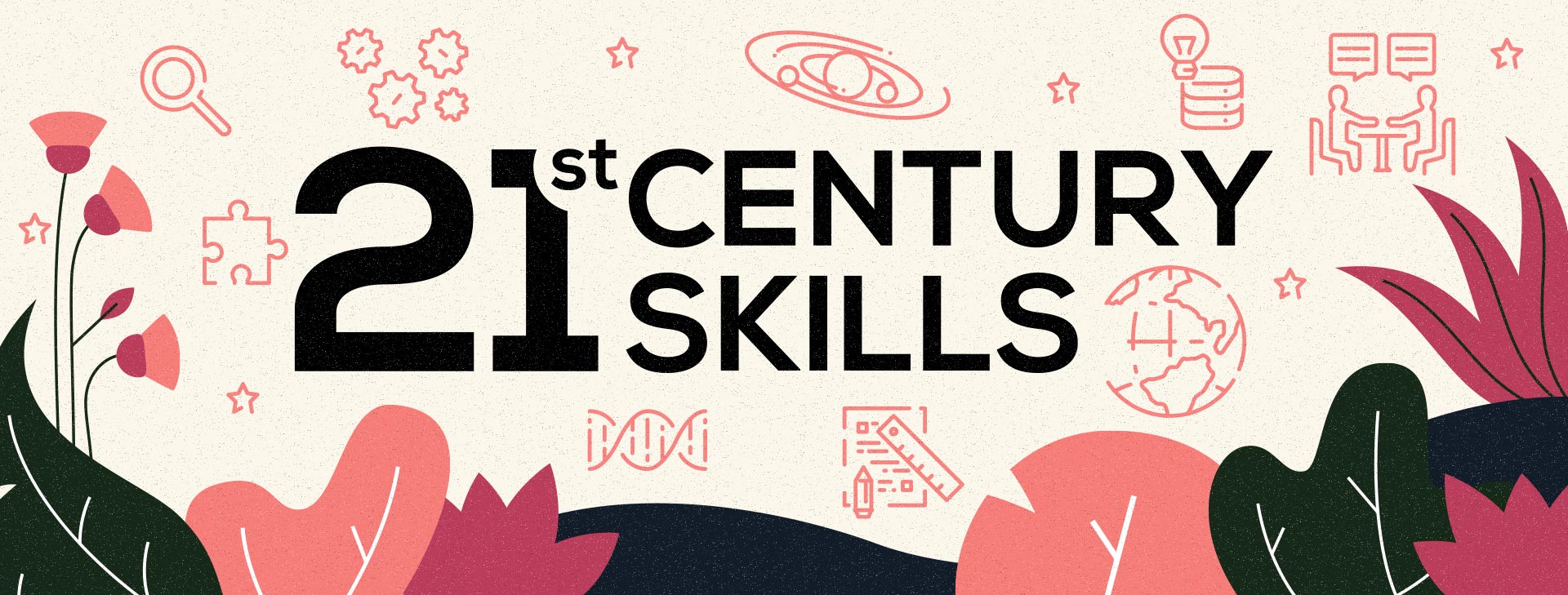
Teaching & Assessing 21st Century Skills: A Focus on Complex Communication
Research and Best Practices: One in a Series on 21st Century Skills
For the full collection of related blog posts and literature reviews, see the Center for Assessment’s toolkit, Assessing 21st Century Skills.
Communication (as discussed in the full literature review) has been identified as a critical success skill in the 21st Century. In a 2014 survey by Pew Research Center, 90% of adult participants identified that communication skills are of the utmost importance for getting ahead in life.
Defining communication as a success skill, however, is complicated by its use in the field of literacy, communication theory, and in the Common Core State Standards for English language arts.
- Literacy research delineates receptive skills of reading or listening comprehension as a separate entity from the expressive skills of writing or speaking.
- Socio-psychological communication theory identifies communication as a process of expression by which individuals interact and influence each other.
- The Common Core State Standards separate reading, writing, speaking, and listening expectations. The speaking and listening standards are further delineated into subdomains of comprehension and collaboration, and presentation of knowledge and ideas.
Additionally, The Partnership for 21st Century Learning states that students must master key subjects including English, reading, and language arts, as well as learning and innovation skills—which include “communication”—and information, media, and technology skills, such as literacy in “information, communications, and technology” (NEA, 2020).
Definition of Complex Communication
There are multiple and diverse definitions of communication in the field. However, operationalizing communication as a success skill requires synthesizing these multifaceted definitions, considering the interrelationship of the subdomains of reading, writing, speaking, and listening, the impact of technology, and verbal and nonverbal proficiencies in various situations and cultures.
When considering these factors, it becomes clear that complex communication requires application and goes beyond basic skills that are normally gained through core academic subjects in school. These basic skills include reading comprehension, speaking, and writing in English, along with the use of grammar and spelling (Casner-Lotto & Barrington, 2006). Consequently, the key knowledge, skills, and abilities found in the research used as students develop competency in complex communication include:
- Comprehension of information: Understands, recognizes, and selects appropriate and compelling information and perspectives provided through various sources (e.g., close reading of texts and/or media, attention and adjustment to nonverbal cues, active listening of oral presentations and discussions, etc.).
- Sharing of information and ideas: Creates an engaging and appropriate message for the intended audience, task, and purpose, whether verbally, in writing, through multimedia, or a combination of these modes; actively engages in discussions by expressing feelings, preferences, needs, opinions in a way that is neither threatening nor punishing to another person and uses nonverbal communication (e.g., body language, gestures, voice) to reinforce or replace other forms of presentation.
- Implementation of information communication technology: Enhances comprehension, presentation, and sharing of content information through the use of information communication technology, which moves beyond a superficial use.
- Recognition of cultural and diverse differences: Deliberately accounts for differing values, attitudes, beliefs, and behaviors found in different cultures and social backgrounds.
Development of Complex Communication
Communication development is multifaceted. In brief, it begins with developing oral language; then learning to read, comprehend, and produce written language; and finally, reading to learn (NRC, 1998). Through early adolescence, communication development is intertwined with cognitive experiences, behavioral and physical opportunities, social/emotional experiences, physical development, and culture. Layered onto this is the development of speech and language and the complexities of skillful reading.
There are multiple philosophies related to skillful reading. One philosophy is that skillful reading includes listening comprehension and decoding, which requires knowledge of letters and phonemic awareness with a high degree of accuracy and automaticity. Another philosophy is that students engage in reading, writing, and language early on in a holistic manner to make sense of their world and to engage in big ideas (NRC, 2012).
Communication development continues throughout adolescence and into adulthood (Alexander & Fox, 2004; Wood & Hartshorne, 2017). Secondary school expectations require students to use a range of language skills, such as asking questions, reflecting on their work and that of their peers, and using complex grammar and subject-specific vocabulary. Applying skills for making inferences, employing comprehension-monitoring strategies, and accessing complex text structures exemplifies the need for continuous learning.
Cultural sensitivity is an essential component of complex communication in a diverse society. Several models are reflecting the development of cultural sensitivity and intercultural communication. Cultural sensitivity development, which is required for intercultural communication, develops across different cultures in a similar manner (Beamer, 1992).
Instruction
Complex communication instruction is dependent on many factors and often occurs through English language arts content standards. However, the research literature generally concentrates on teaching complex communication through specific communication domains, including reading, speaking and listening, and writing, with additional considerations given to struggling students and cultural issues.
While these strategies may be appropriate as students develop the underlying skills for complex communication, there will ultimately need to be a shift to a more holistic instructional approach. This holistic approach, as previously described, provides students with situations that combine the components of English language arts, along with purposeful use of communication technology, including the knowledge and skills to access ideas, information, and audiences, in order to engage in communicating for a real-world purpose.
Implications of Research for Classroom Assessment Design
Traditional classroom assessments generally measure the underlying skills for complex communication, but they do not fully capture this construct. Assessments of complex communication must reach beyond traditional reading and writing assessments to more complex performance tasks—tasks that comprise “multiple elements, attitudes, behaviors, ways of acting and thinking, with a focus on their application to real-life contexts” (Ercikan & Oliveri, 2016, p. 310).
- These types of assessments are open-ended, going beyond a selected-response format, and allow for multiple opportunities to “engage with novel, authentic problems and to create complex, extended responses in a variety of media” (NRC, 2012, p. 147).
- These assessments allow students to communicate collaboratively with different stakeholder groups (e.g., peers, community members) while working on authentic problems.
- The focus on complex communication requires educators to extend assessments across disciplines, including the use of informational technology, and to provide opportunities for students to explore meaningful issues while considering a variety of individual values and beliefs.
Complex communication can be assessed using portfolios of student work (NRC, 2011). Portfolios allow for measuring the achievement of complex communication over time, and in a variety of situations and content areas. They can include self-reflections as well as demonstrations that integrate the domains of complex communication and other success skills.
The use of performance assessments, of course, brings to forefront several challenges including the knowledge and skills necessary to develop high-quality performance assessments and corresponding scoring rubrics, and the need for alignment with curriculum and instruction. Not to mention the time involved in scoring student work, making score-based inferences about student performance, and adjusting instruction as indicated by the assessment results.
These challenges, however, become opportunities as educators clarify their theory of learning and their vision of the characteristics of a graduate.
For a complete discussion of the topics covered in this post, the full literature review on complex communication is available here.
